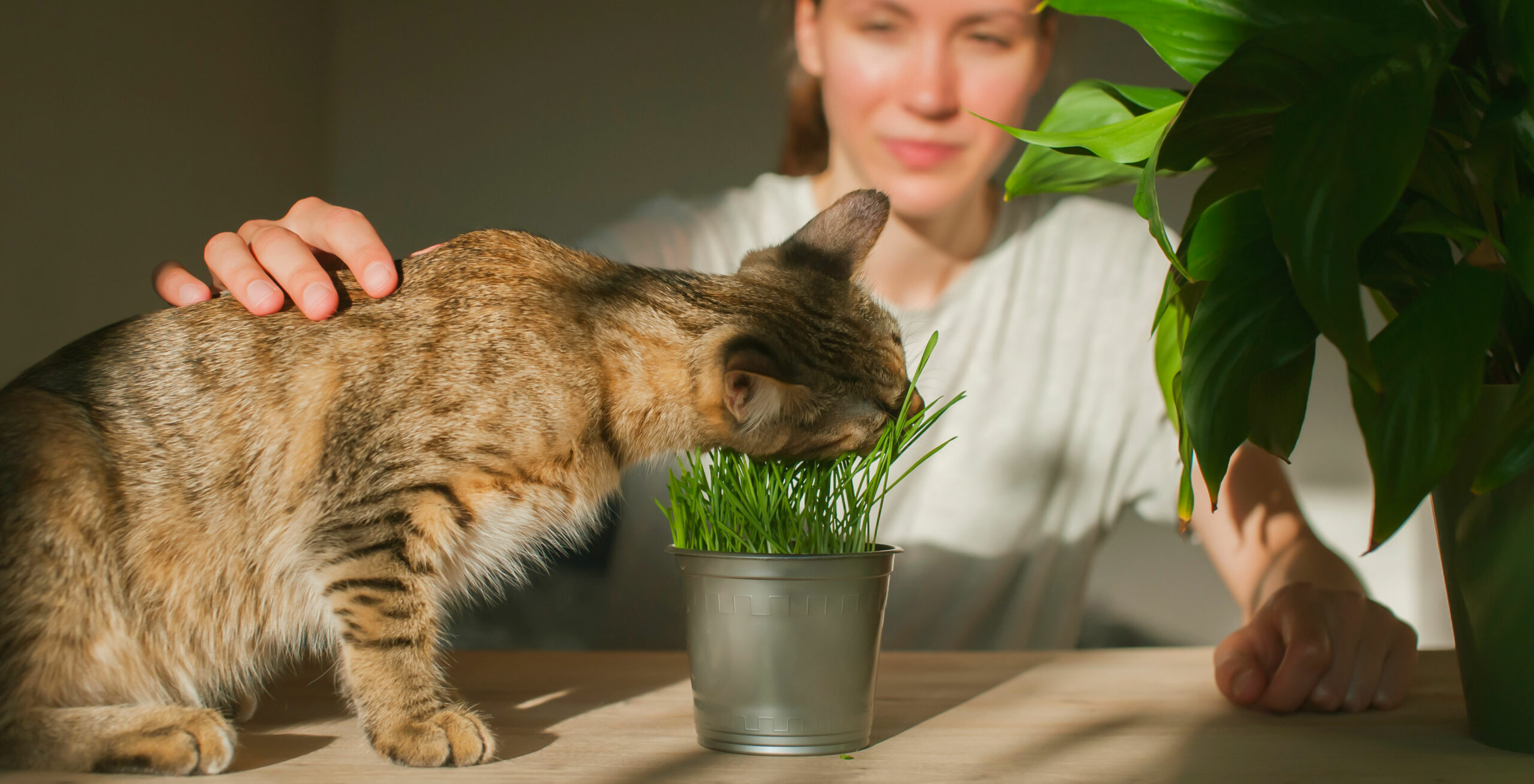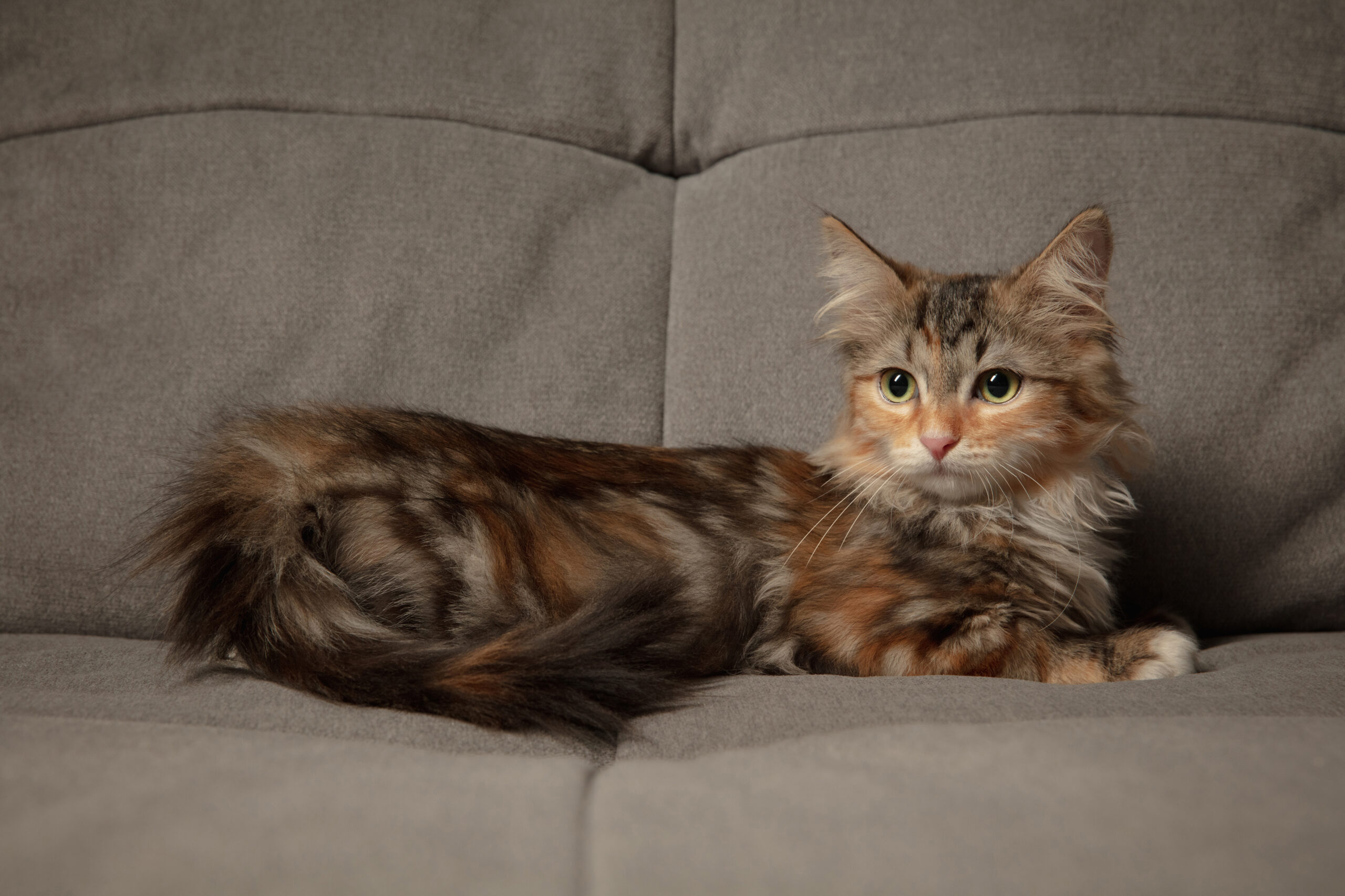Have you ever been spending time at home, only to hear your cat retching from the other room? If your cat is throwing up frequently, or is experiencing other unusual symptoms alongside the vomiting, it could be a sign of a more serious underlying health issue.
There are several reasons your cat might be vomiting more often and the severity of these issues can vary greatly. Here are some of the most common reasons for why your cat is throwing up and the potential underlying causes, as well as how serious the issues of vomiting in cats can be.
Hairballs
The most common reason for cats vomiting is hairballs. These undigested wads of cat fur are occasionally spat up by cats, particularly long-haired breeds or in cats who groom themselves excessively.
While the occasional hairball is generally not a cause for concern, frequent hairballs can be a sign of an underlying conniption in your cat. Your cat has evolved to handle the hair that they ingest from grooming and they should not have frequent hairballs. If you regularly finding hairballs around the home, it is time to book an appointment with your vet.
Overeating or eating too fast
For cats that self-regulate their feeding (as opposed to being fed set amounts at certain times), overeating and/or eating too quickly can be another common cause of vomiting. If you notice that your cat is often vomiting after they eat, or if you notice undigested food in their vomit while cleaning it up, overeating or eating too quickly is likely the cause.
There are a few ways to circumvent this issue yourself, such as switching to scheduled feeding or investing in special cat food bowls that encourage them to slow down while eating. If the issue persists, it may also be an allergy to something in their food, so consider talking to your vet about switching to a different formula to see if there’s a difference.
If your cat is still vomiting after most meals, you should always take them to your veterinarian to rule out other, more serious issues.
Poisoning
In addition to things we’d normally consider as poisonous to cats, such as household cleaners, human-intended medications, or chemicals like antifreeze, there are probably other common items in your home that your cat could become sick from ingesting. Here are a few things that can cause vomiting in your cat if eaten:
- Certain human foods, particularly:
• Onions
• Garlic
• Chocolate
• Dough with yeast
• Grapes/raisins
• Gum or candy containing the sweetener xylitol
• Citrus fruits
- Common indoor/outdoor plants, especially:
• Lilies
• Tulips
• Foxgloves
• Poinsettias (during the holiday season)
• Philodendrons
- Anti-parasite/insecticide drugs intended for dogs or other animals
- Heavy metals such as lead (sometimes found in paint in old homes) or zinc (found in old pennies, sunscreen, etc.)
- Garden products such as fertilizer
Cats that have eaten something poisonous will often throw up suddenly and repeatedly. Other symptoms of poisoning include lethargy, drooling, dizziness, diarrhea, and heavy breathing. If you notice any of these symptoms, or if you believe your cat might have ingested something poisonous, it’s crucial to get them to a veterinary hospital as soon as possible.
Inedible objects
Even if your cat doesn’t get into something poisonous, they could be struck by vomiting if they eat a foreign object in your home. This could be just about anything, from pieces of string to dust bunnies, or even things out of the garbage can.
In general, it’s a good idea to keep surfaces clear of anything small enough to be eaten by your cat. You should also make sure to keep lids on garbage bins in order to keep your furry friend as safe as possible.
The best solution to cats eating foreign, inedible objects is prevention. With that said, if your cat vomits up something they shouldn’t have eaten, it’s still a good idea to have them checked by a veterinarian to ensure there’s nothing else causing an internal blockage.
Internal parasites
Sometimes, cats can experience bouts of vomiting due to certain parasites wreaking havoc on their digestive system. Not all parasites cause vomiting, but it’s important to consider if you notice your cat having this problem.
Some of the parasites that can cause vomiting in your cat include:
- Roundworms
- Hookworms
- Tapeworms
- Giardia
Although most cats are routinely provided deworming to protect against these various parasites, there’s always a small chance of infection depending on your cat’s environment, habits, and opportunity to hunt wild prey. If you notice vomiting, along with the other symptoms of parasite infection such as coughing, a dull fur coat, mucus or blood in the feces, low appetite, or diarrhea, you should take them to your veterinarian for treatment right away.
More serious health conditions
Although far less common than other issues on this list, there are several more serious health conditions that might cause vomiting in your cat. These will usually come with their own list of other symptoms, so be sure to check for them if you notice your cat throwing up.
Here are a few of the more major health problems that might cause vomiting in your cat:
- Constipation
- Inflammatory bowel disease
- Cancerous (or benign) growths in the intestines
- Diabetes
- Kidney disease
- Hyperthyroidism
These health problems are difficult to diagnose on your own, and vomiting is typically not the only symptom. So if you can’t immediately figure out what’s causing your cat to vomit (e.g. foreign objects being passed, overeating, hairballs, etc.) then you should always play it safe and have them examined by your vet straightaway.
Examining the vomit, while gross, can help
It’s an unpleasant task, but taking a closer look at your cat’s vomit can be an invaluable way to help your veterinarian determine potential causes and underlying issues that are affecting your cat. Here are some quick facts on the colours of cat vomit, and what each one may mean:
- Red or pink – Unless you know for certain your cat eats foods with red colouring in it, this is a serious sign of blood being present in your cat’s vomit. Bring your cat to the veterinarian right away.
- Yellow, orange, brown – Yellow, orange, or brown vomit is the most common colour to see, and it usually is made up of semi-digested food and naturally-occurring stomach bile.
- Clear/foamy or white – If your cat is vomiting on an empty stomach, or is vomiting excess saliva, this can cause a white and clear or somewhat foamy appearance in their vomit.
- Green – Green vomit can sometimes be caused by an excess of stomach bile being regurgitated, or else if your cat has eaten something green (e.g. houseplants, grass) or something with green dyes in it.
- Black or brown – Often, black or brown vomit that resembles coffee grounds is a sign of internal bleeding somewhere in the gastrointestinal tract. Take your cat to an emergency veterinary hospital right away if you notice this colour and consistency in their vomit.
There are many, many potential reasons for your cat to be vomiting, ranging from inconveniences like hairballs to serious conditions like internal blockage or disease. In general, it’s always a good idea to have a trusted, experienced veterinary hospital on your contact list. This ensures you always have a resource to provide care for your cat, whether you’re mildly concerned or you’re requiring immediate attention and care for them.
Creative Commons Attribution: Permission is granted to repost this article in its entirety with credit to Hastings Veterinary Hospital and a clickable link back to this page.






